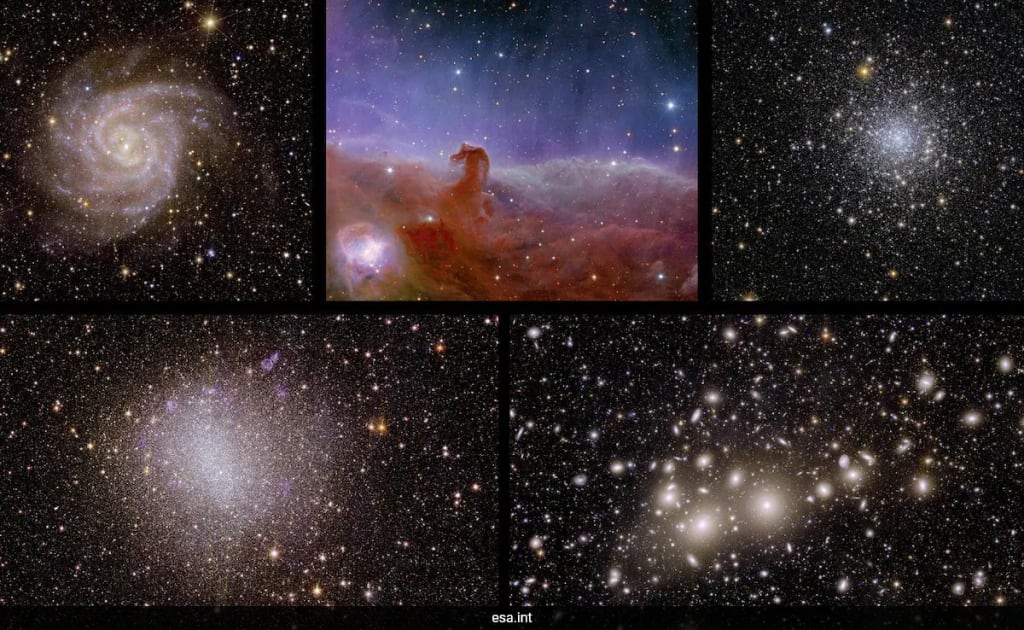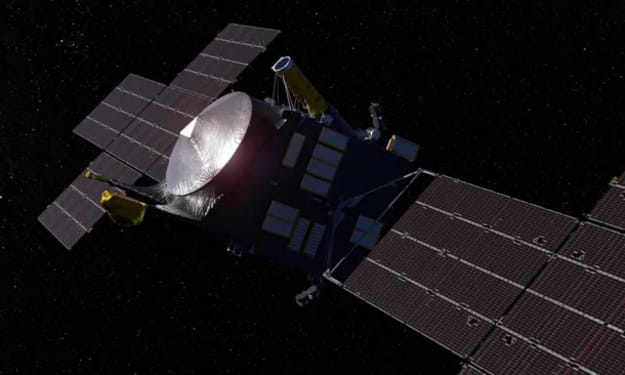Landmark Data: The Euclid Telescope Begins Mapping the Dark Matter
The Euclid space telescope, launched by the European Space Agency, is making significant strides in mapping dark matter and dark energy.

Euclid Space Telescope Unveils the Universe's Hidden Wonders
The European Space Agency’s (ESA) Euclid space telescope, launched last year, is already making significant strides in its ambitious six-year mission to map the cosmos. Designed to survey two billion galaxies across a third of the sky, Euclid's primary goal is to unravel the mysteries of dark matter and dark energy, which together constitute 95 percent of the universe. The recent release of images from Euclid offers a breathtaking glimpse into the diverse and complex structures of the universe, showcasing its extraordinary capabilities.
A Glimpse into the Cosmos
Among Euclid’s recent achievements is a remarkable image of the massive galaxy cluster Abell 2390, situated 2.7 billion light-years away. This cluster contains over 50,000 galaxies and holds the mass of around 10 trillion suns, as noted by NASA's Jason Rhodes. The gravity of Abell 2390 is so immense that it distorts the light passing through it, a phenomenon known as gravitational lensing. This distortion provides critical evidence of dark matter, an elusive substance that, along with dark energy, plays a pivotal role in shaping the cosmos.
Star Nurseries and Spiral Galaxies
Another standout image from Euclid offers the deepest view yet of Messier 78, a vibrant star nursery located 1,300 light-years away in the Orion constellation. This image provides unprecedented detail of star formation, complementing the deep-space observations made by the James Webb Space Telescope. The intricate structures and young stars captured in this image highlight Euclid’s capacity to peer into regions of intense stellar activity.
Euclid also captured an image of the galaxy cluster Abell 2764. Despite a minor pointing error, the telescope successfully detected faint objects near bright stars, demonstrating its precision and sensitivity. This image underscores Euclid’s ability to explore the faintest corners of the universe, pushing the boundaries of our knowledge.
Discoveries and Challenges
In addition to these stellar images, Euclid made a fascinating discovery: a previously unknown dwarf galaxy in the Dorado cluster. This discovery adds a new piece to the puzzle of galaxy formation and evolution. Moreover, Euclid captured a stunning image of the spiral galaxy NGC 6744, a galaxy similar to our Milky Way, set against a backdrop of twinkling stars. These images, all taken within a single day, exemplify the telescope’s powerful observational capabilities.
Initial Scientific Studies
The scientific community has already begun to delve into Euclid’s data, initiating studies on various cosmic phenomena. One such study focuses on orphan stars in the Perseus cluster, investigating their distribution and behavior to infer the influence of dark matter. These orphan stars, which drift between galaxies rather than residing within them, offer valuable clues about the unseen forces shaping the universe.
However, while initial findings are promising, drawing definitive conclusions about dark energy remains a work in progress. Dark energy, the mysterious force driving the accelerated expansion of the universe, is one of the most profound enigmas in cosmology. Euclid’s ongoing mission promises to shed light on this dark component of the cosmos, but comprehensive results will require time and extensive data analysis.
Overcoming Obstacles
Euclid’s journey has not been without challenges. The mission encountered a significant hurdle when ice began clouding the telescope's view. This issue necessitated a delicate operation to remove the ice, which has shown signs of potentially returning. The mission team is diligently exploring solutions to prevent this recurrence and ensure the telescope’s optimal performance.
The Road Ahead
Despite these challenges, Euclid continues to push the frontiers of space exploration. Its ability to capture detailed images of distant galaxies, star nurseries, and galactic clusters marks a new era in our understanding of the universe. As Euclid’s mission progresses, it will undoubtedly provide further insights into the fundamental nature of dark matter and dark energy, transforming our comprehension of the cosmos.
The Euclid space telescope stands as a testament to human ingenuity and the relentless quest for knowledge. Each image and discovery brings us closer to unraveling the universe's deepest mysteries, promising a future rich with astronomical revelations.
About the Creator
Raju Moses
I am a fascinating Writer of all available trending topic in the world.
Enjoyed the story? Support the Creator.
Subscribe for free to receive all their stories in your feed. You could also pledge your support or give them a one-off tip, letting them know you appreciate their work.





Comments (1)
Hey, just wanna let you know that this is more suitable to be posted in the FYI community 😊